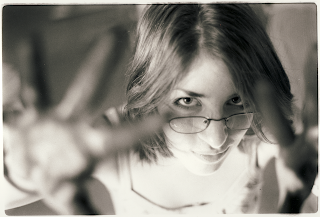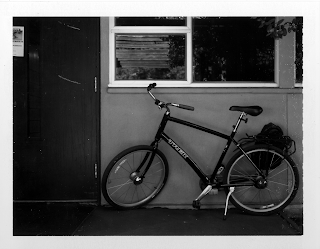In the first week, I worked on a number of things, namely a comparison of fiber paper versus resin-coated paper and a large photogram.
Below are the results of my comparison between fiber and resin-coated papers (model is the amazing Meredie Johnson).
Fiber:
 Resin-Coated
Resin-Coated

The main difference between fiber and resin-coated paper is that fiber paper gives everything a "warmer" looking color tone, in which the entire photo takes on a very subtle greyish-yellow looking tint. Resin paper in comparison has a stark cold, almost sterile-looking feel to it, where the whites and greys all have blue components.
Fiber paper also gives off much deeper dark colors, whereas dark colors on resin-coated paper appears to be more of a very very very dark grey (it has bluish hints, versus fiber paper's deep black.)
I would imagine that one would have to decide what effects are desired before choosing a paper type. Cold? Warm? Greyish? Black?
Next off is the photogram.

I collaborated with LeeAnne to produce a large human photogram that was 4 sheets of 20*24" resin-coated photo paper taped together. Our process involved taping the four papers together out in the safety light, then going into the film-loading darkroom and having LeeAnne lay on the floor so we could make the photogram by turning the lights on for 1 second.
To make the sparkling effect on the top corner, we used a spray bottle to apply spots of fixer before developing the photogram, which prevented the spots touched by the fixer from being developed.
Then, we separately developed each 20*24" sheet, as the large photogram would not have fit in the developing chemical trays.
All in all, I would say the first week was a pretty successful way to start off the new year with a theme of experimentation and thinking out of the box.













 , and Fiber Paper. I used different exposure times under the enlarger, but used the same piece of film and level of contrast for both. I tend to prefer Resin Coated paper just because I feel like you come out with a cleaner more athletic final piece, and I also like the crumpled leaf effect after development
, and Fiber Paper. I used different exposure times under the enlarger, but used the same piece of film and level of contrast for both. I tend to prefer Resin Coated paper just because I feel like you come out with a cleaner more athletic final piece, and I also like the crumpled leaf effect after development